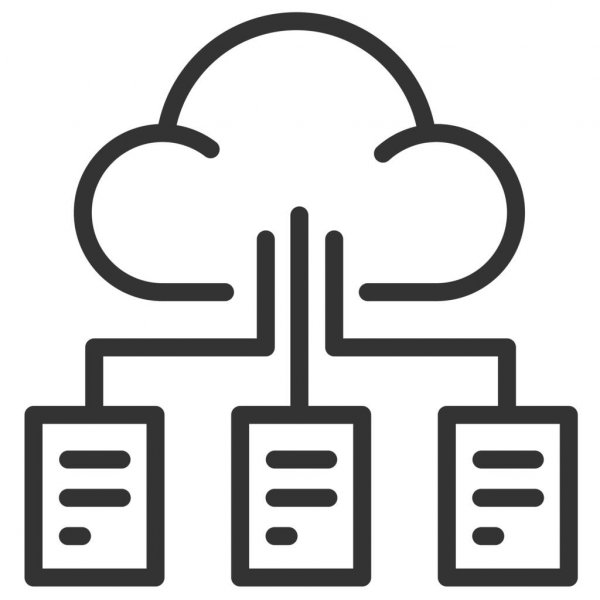Have you ever ordered a bunch of Fortinet gear... Full Story
By Manny Fernandez
July 26, 2021

IPv4 and IPv6 DHCP Options
DHCP Options
When configuring DHCP in various system, you sometimes requires specific options such as when you configure Cisco Phones and need to tell the phones where to get their boot image from using option 150. Here are some of the most common ones. A few years back, I wrote an article on how DHCP v4 really works. I recommend you check that one out as well.
IPv4 DHCP Options
1
Subnet Mask
RFC 2132
The subnet mask to apply to the address that is assigned to the client.
2
Time Zone Offset,RFC 2132,
Informs the client about the time zone offset, in seconds. For example, Pacific Standard Time is GMT Ð 8 hours. This field would be filled with “”- 28800″”. (Eight hours * 60 minutes/hour * 60 seconds/minute)
3
Gateway
RFC 2132
Tells the client which router is the default Gateway.
4
Time Server
RFC 2132
Tells the client the IP address of a time server that can determine the client’s current time. This is related to the Time Zone Offset option.
6
DNS
RFC 2132
The IP address of the DNS server(s) to use
7
Log Server
RFC 2132
The log server the client is going to forward logs to.
12
Hostname
RFC 2132
Defines the FQDN for this device (e.g. www.infosecmonkey.com)
15
Domain Name
RFC 2132
Defines the domain name to use for the device (e.g. infosecmonkey.com)
43
Vendor Specific
RFC 2132
Defines configuration data that is not defined in the standard DHCP RFCs. Individual vendors can define different pieces of data that may be found in this option. CableLabs’ eDOCSIS specification, for example, defines certain sub-options that appear in this option
51
Lease Time
RFC 2132
Time the device can use the IP address
60
Vendor Class ID
RFC 2132
Defines some identifier from the client that may identify the client’s device class. The DHCP specification does not define what values go into this field, but other specifications do. For example, the DOCSIS specifications state that if the device is DOCSIS-compliant, option 60 must start with “”DOCSIS”” (and also include other details).
66
TFTP Server
RFC 2132
Defines the FQDN or IP address (or cluster identifier) that the device should use to download the file specified in option 67. Note that often the data put into option 66 does not actually appear in the DHCP packet as option 66, but may have been moved into the “”same”” field of the DHCP packet. Additionally, the FQDN may have been resolved to an IP address and also placed in the “”siaddr”” field of the DHCP packet.
67
Filename
RFC 2132
Defines the filename that is to be downloaded from the server specified in option 66. Note that often data put into option 67 does not actually appear in the DHCP packet as option 67, but may be moved into the “”file”” field of the DHCP packet. (Note: Address Commander can do some dynamic file name generation for this name.)
82
Relay Agent Information Option
RFC 3046
This option carries many other sub-options that are added by relay agents and not the clients themselves. Some of the common options are listed below
82.1
Circuit ID
RFC 3046
This is an identifier added by the relay agent to indicate which interface the client is on. This is commonly used as a subscriber identifier in DSL-based networks.
82.2
Remote ID
RFC 3046
This is an identifier added by the relay agent to identify the client. It is commonly used as a subscriber identifier in DOCSIS-based networks. DOCSIS mandates that this option is filled with the MAC address of the cable modem and applies to all traffic from the cable modem, or any device appearing from behind that cable modem
122
CableLabs Client Configuration Option
RFC 3495
This is an option defined by CableLabs to carry the information necessary to configure PacketCable devices. The sub-options are listed below
122.1
TSP Primary DHCP Server
RFC 3495
The multimedia telephony adapter (MTA) portion of the device listens to this IP address of the DHCP server. This has two special values, 0.0.0.0 (which will disable the MTA), and 255.255.255.255 (which will instruct the MTA to accept replies from any DHCP server).
122.2
TSP Secondary DHCP Server
RFC 3495
A second DHCP serverÕs IP address. Otherwise the same as option 122.1
122.3
TSP Provisioning Server's Address
RFC 3495
The MTA contacts the server listed to complete its provisioning process. This is the FQDN of a multimedia provisioning service (MPS), whether a specific MPS, or a cluster identifier.
122.6
TSP Kerberos Realm Name
RFC 3495
For PacketCable secure mode provisioning, the name of the Kerberos Realm. There are four more special values that may be in this field: BASIC.1, BASIC.2, HYBRID.1, and HYBRID.2. This indicates whether the device is in basic, hybrid, or secure mode provisioning. The “”.1″” and “”.2″” parts indicate whether the MTA notified the provisioning server upon completion of the provisioning process.
IPv6 DHCP Options
17Vendor-Specific Information Option17[4491]CableLabs Vendor-Specific Information Option17[4491].32TFTP Server Addresses option17[4491].3317[4491].3417[4491].3717[4491].3823DNS Recursive Name Server Option24Domain Search List39DHCPv6 FQDN optionComments are closed.
Recent posts
-

-

Had a customer with over 200 static routes on... Full Story
-

This is a work in progress, I will be... Full Story

Hello infosecmonkey.com administrator, Your posts are always well presented.
To the infosecmonkey.com owner, Your posts are always well-supported by facts and figures.